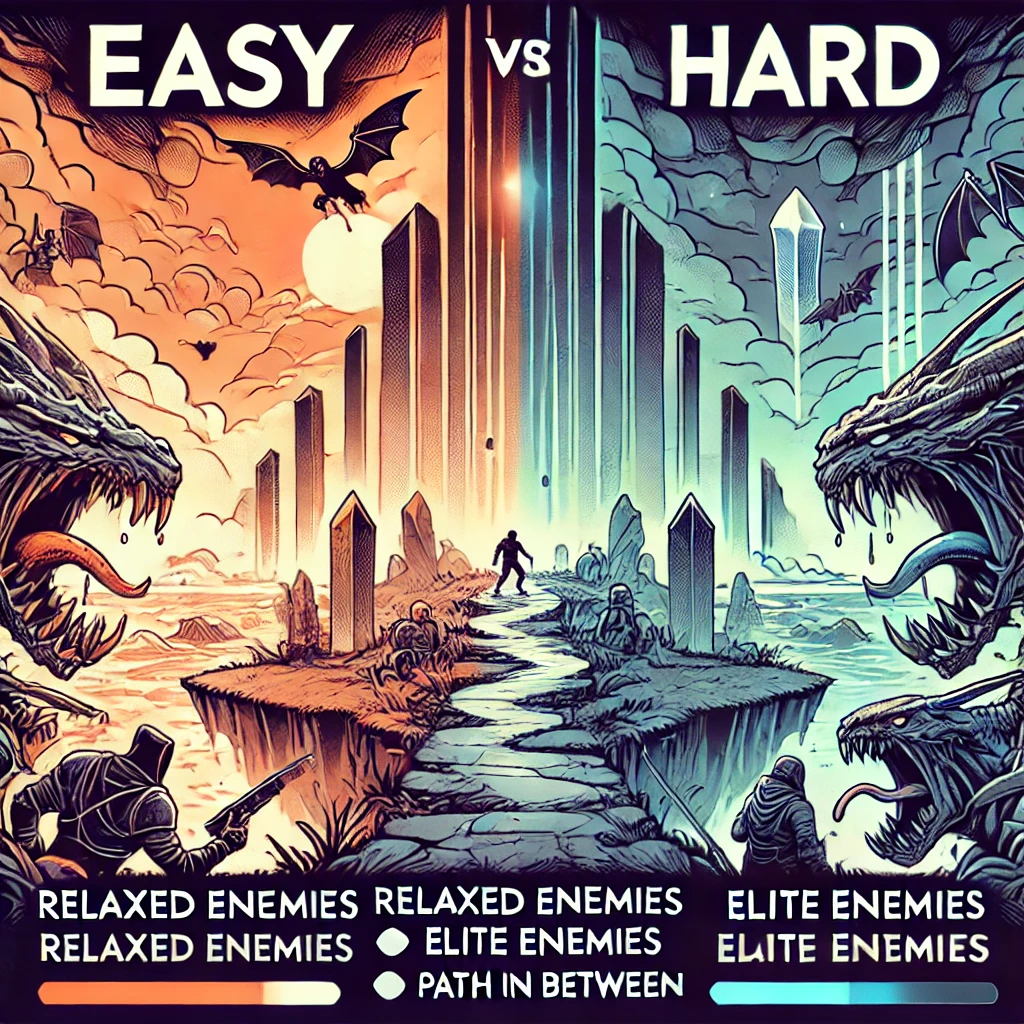Most games let you choose how hard you want the experience to be—but difficulty is more than just tougher enemies or fewer resources. It shapes how players engage, how they remember the story, and even whether they finish the game at all.
What Does Difficulty Actually Change?
- Enemy AI: Smarter, faster, more aggressive
- Damage scaling: More taken, less dealt
- Resources: Fewer health pickups, ammo, or crafting parts
- Objectives: Tighter time limits or stricter requirements
Some games also modify puzzle complexity, reaction windows, or even storyline beats depending on the chosen level.
Why It Matters
- Accessibility: Lower difficulties help new or casual players enjoy the game without frustration
- Replayability: Higher modes often unlock secrets, rewards, or alternate endings
- Pacing: The harder the game, the more methodical the playstyle
- Pride and mastery: Beating a game on the toughest setting can be a personal milestone
The “Easy Mode Debate”
Some players argue that difficulty is part of artistic intent (e.g., Soulsborne games), while others say games should be for everyone, with options to customize the experience.
Both views have merit. What’s key is player choice.

Leave a Reply